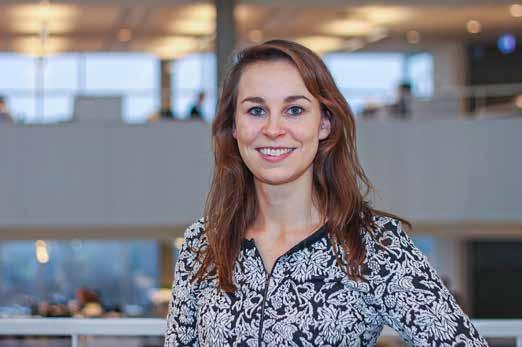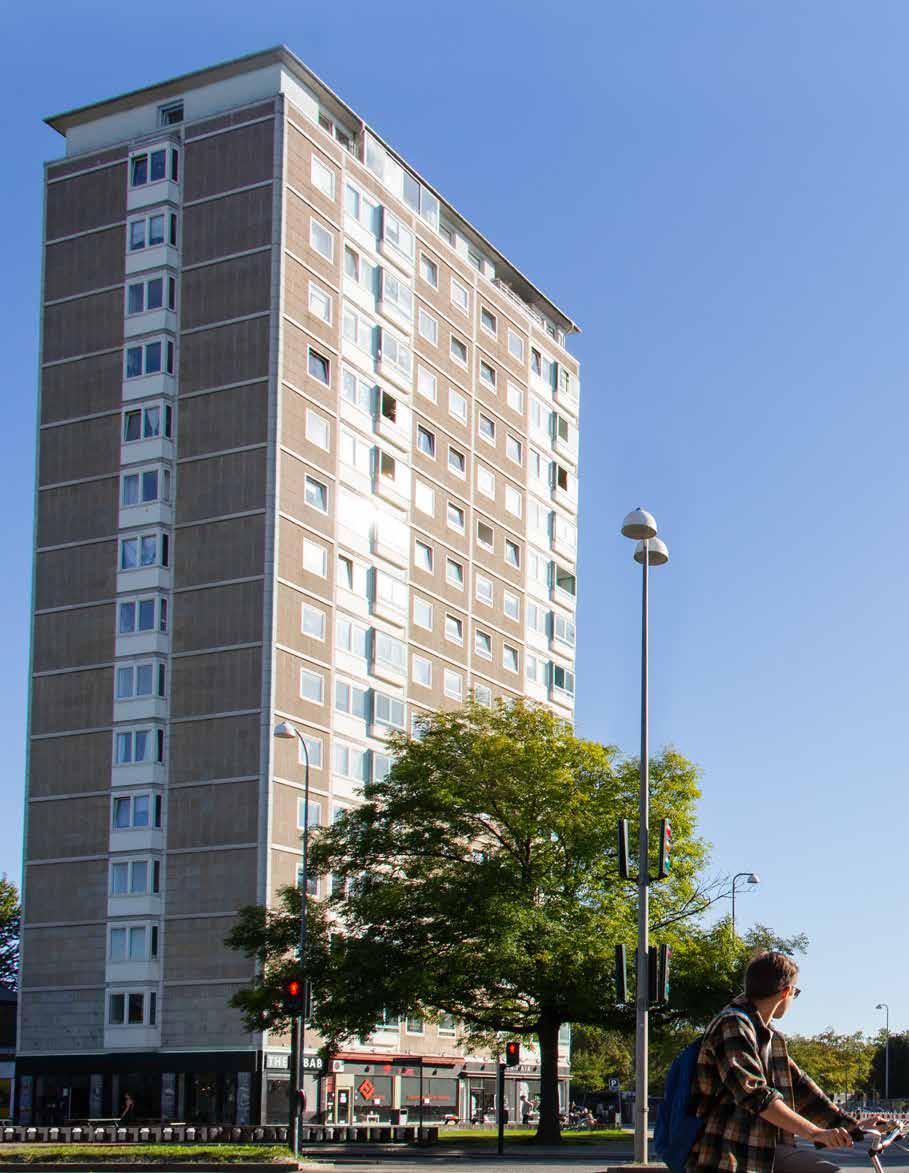
5 minute read
Innovation
New research will automate indoor climate calculations and strengthen communication INNOVATION
An Industrial PhD at MOE will build upon our development of simulation tools, which make it easy to explore a myriad of solutions for an optimal building design with a low energy consumption. Indoor climate parameters will now be included in the equation, and the results will be distributed to our partners in a smarter way.
Advertisement
For The new SIMAC in southern Denmark, we used our specially developed simulation tool, MIBS, to create an optimal balance between aesthetics and the requirements for energy.

Nanna Dyrup Svane Specialist Energy Design & Indoor Climate Copenhagen
With the new Multivariable Building Simulations (MIBS) method, we established a platform for the BeDesigner tool, in which the design team can explore the entire solution spectrum when the optimal façade design is to be found. By making thousands of automated simulations, the complex interaction between everything ranging from the façade and ventilation solutions to the glass areas and room sizes is analysed.
The method can immediately show how an adjustment in the design will affect the other design parameters and what the impact will be on the energy consumption.
Nanna Dyrup Svane is the main person behind the Industrial PhD that will take this development one step further. The output will now include indoor climate parameters, such as the atmospheric indoor climate (CO₂), the thermal indoor climate (temperature) and daylight.
BeDesigner includes the indoor climate requirements for residential housing. However, we should also be able to find answers for more complex buildings. Even an office building with an atrium in the middle can be challenging if we are to comply with the requirements of the building regulations. Furthermore, many buildings are designed in accordance with different sustainability certification systems with even more demanding requirements. It is clear that far more advanced calculations are required if the indoor climate is to be inte grated, and that will be an important part of my job, says Nanna. Better and smarter communication Nanna has been in the industry for 8 years and knows from experience that the distribution of the calculation results is often the greatest challenge. Nanna will therefore analyse and optimise the communication flow in which technical knowledge is exchanged.
Indoor climate calculations are an advanced topic and there is no doubt that an effort can be made to distribute the results more intui tively. In this respect, I would also like to look at how we can optimise and distribute the knowledge and measures we have concluded in our analysis to the parties who will use the results in their work. Today, communication is still based on PDFs to a large extent, and this often results in both duplicate work and misun derstandings. Among other things, we should start using the BIM model actively to share knowledge.
A link to BIM As Nanna points out, one last important aspect of the PhD is to create a far better exchange of information between BIM models and indoor climate programmes, such as BSim. It should be possible to create automated and quality-assured data extraction from BIM models aimed at the specific simulation tools. On the other hand, we will be looking at how the results can be made more visible in the digital building models, thereby creating a common communication platform. The principal advisor and Corporate Technical Director for Energy Design and Indoor Climate, Steffen Maagaard, sees great potential in the project:
With MIBS, we laid the cornerstone for a paradigm shift that is necessary if we are to ensure the perfect balance between architectural visions and the increasing demands on energy consumption, sustainability and indoor climate. It is a tremendous benefit to be able to vary many design parameters simultaneously and thus map the entire creative scope. Nanna's PhD will be an important step in this development, and her sharpened focus on an improved distribution of results and a better link to BIM will strengthen our position as the architect's and client's preferred sparring partner.
Steffen Maagaard Corporate Technical Director Energy Design & Indoor Climate Aarhus
The Industrial PhD project is a collaborative initiative between MOE, Aalborg University and the Danish Building Research Institute, and it is supported by Denmark Innovation Fund.

With respect for the cultural heritage ENERGY RETROFITTING
If our ambitions in the environmental and climate field are to be met, it will require a comprehensive upgrade of the existing building mass. However, the aesthetics must also be taken into account when we lower the CO₂ emissions from the country's older buildings.
In Copenhagen, we are participating in the modernisation of five residential towers worthy of preservation. The aim is to significantly lower their energy consumption and enable the 434 residential units to meet today's standards. Søndermarken's 16-storey high-rise buildings were built between 1951 and 1954, which is an era that has made Denmark world-famous for its design and architecture. It is a key part of the renovation project to ensure that the changes are carried out with due consideration to the unique characteristics of the buildings. The buildings are typical of their time and were not built with the same precision as today. In some cases, the façade has a horizontal deviation of up to 20 cm, while the floor height varies by up to 15 cm. Both of these aspects have had a major impact on our design work. In addition to the façades and roofs, the major renovation project encompasses everything from all installations to the treatment of black mould.

Optimisation of processes MOE wishes to take an active part in the development of this area. We are co-author of the Danish Building Research Institute's Instruction 269: Energy retrofitting of large buildings – method and process. This publication provides an understanding of how to approach the process correctly, from the earliest stages up until the subsequent operation of the building. We see far too often that the expected savings are not realised. Therefore, the instructions focus on what methods can be used and which documents and requirements are associated with the individual stages, not to mention how the information should flow from stage to stage to ensure an optimal and streamlined process. No matter how good the calculations are, it is important to clarify how complex it is to achieve the desired energy consumption.










